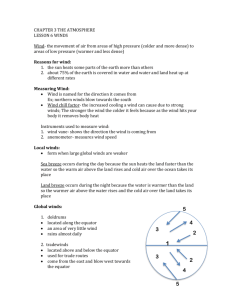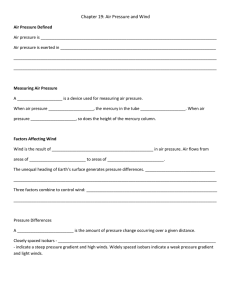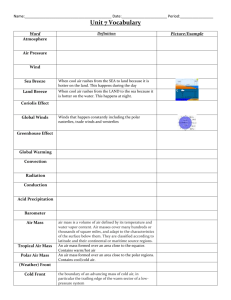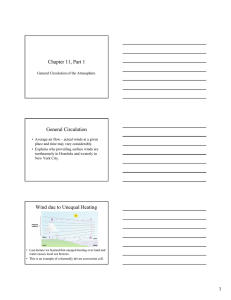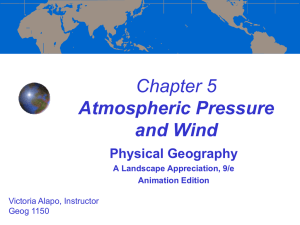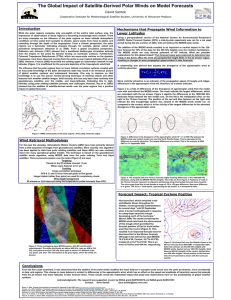Earth Science: Pressure Centers and Winds
advertisement
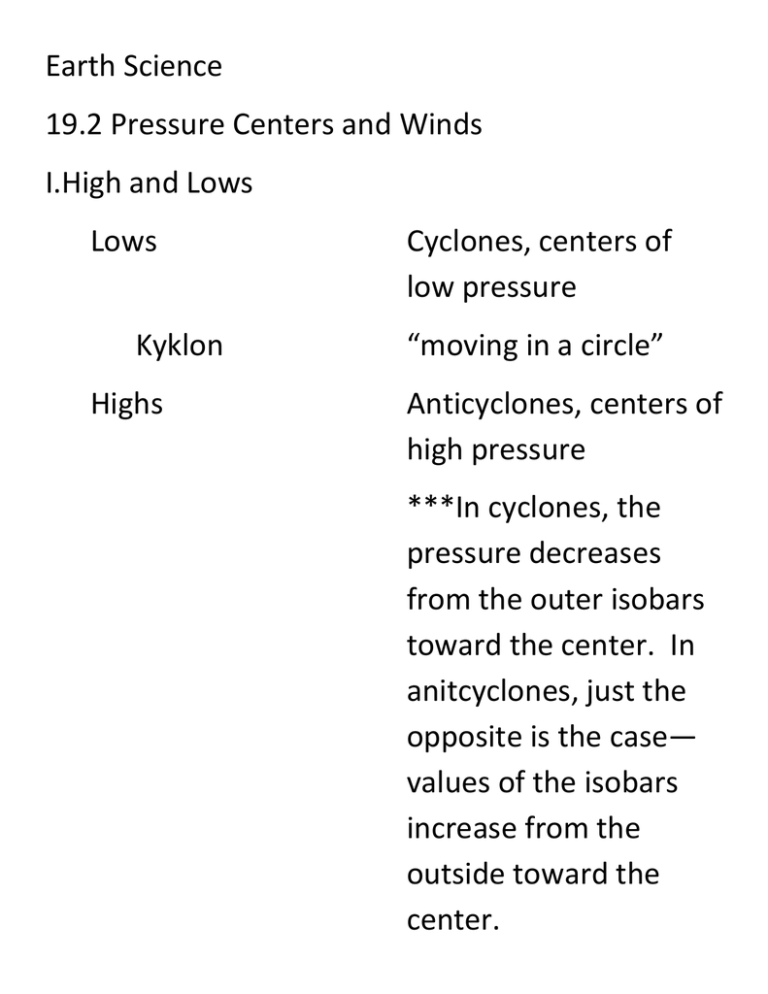
Earth Science 19.2 Pressure Centers and Winds I.High and Lows Lows Kyklon Highs Cyclones, centers of low pressure “moving in a circle” Anticyclones, centers of high pressure ***In cyclones, the pressure decreases from the outer isobars toward the center. In anitcyclones, just the opposite is the case— values of the isobars increase from the outside toward the center. Cyclonic and Anticyclonic Winds ***When the pressure gradient and the and the Coriolis effect are applied pressure centers in the Northern Hemisphere, winds blow counterclockwise around a low. Around a high, they blow clockwise. ***In either hemisphere, friction causes a net flow of air inward around a cyclone and a net flow of air outwards around an anticyclone. Weather and Air Pressure Horizontal Convergence Net inward movement of air causes the area occupied by the air mass to shrink Low Pressure Center Causes a net accumulation of air which increases it pressure Weather Forecasting Based on locations and possible paths of cyclones and anticyclones 1) Cannot definitely say this will happen for sure II. Global Winds ***The atmosphere balances these differences by acting as a giant heat-transfer system. This system moves warm air toward a high latitude and cool air toward the equator. Non Rotating Earth Model Non-rotating planet with a smooth surface of either all land or all water. Two large thermally produced cells would form 1) Heated air at the equator would rise until it reached the tropopause 2) Tropopause would deflect this air toward the poles. Rotating Earth Model Effect of rotation were added to the global circulation model, the two cell convection system would break down into smaller cells. 1) Polar Cells 2) Tropical /Sub Tropical Cells 3) Middle latitudes Ferrell Cells Hadley Cells Trade Winds Two belts of winds that blow almost constantly from easterly directions 1) Subtropical high and equator Westerlies Remainder of the air travels toward the poles and is deflected 1) Middle latitudes 2) Dominant east to west motion of atmosphere Polar Westerlies Winds that blow from the polar high toward the subpolar low. Polar Front Cold polar air sinks and spreads toward the equator. Interaction of these warm and cool air masses produces a stormy belt Monsoons Seasonal changes in wind direction Winter Monsoons Dominated by dry continental air Summer Monsoons Warm months experience a flow of water-laden air from Indian Ocean produced rainy summer monsons

